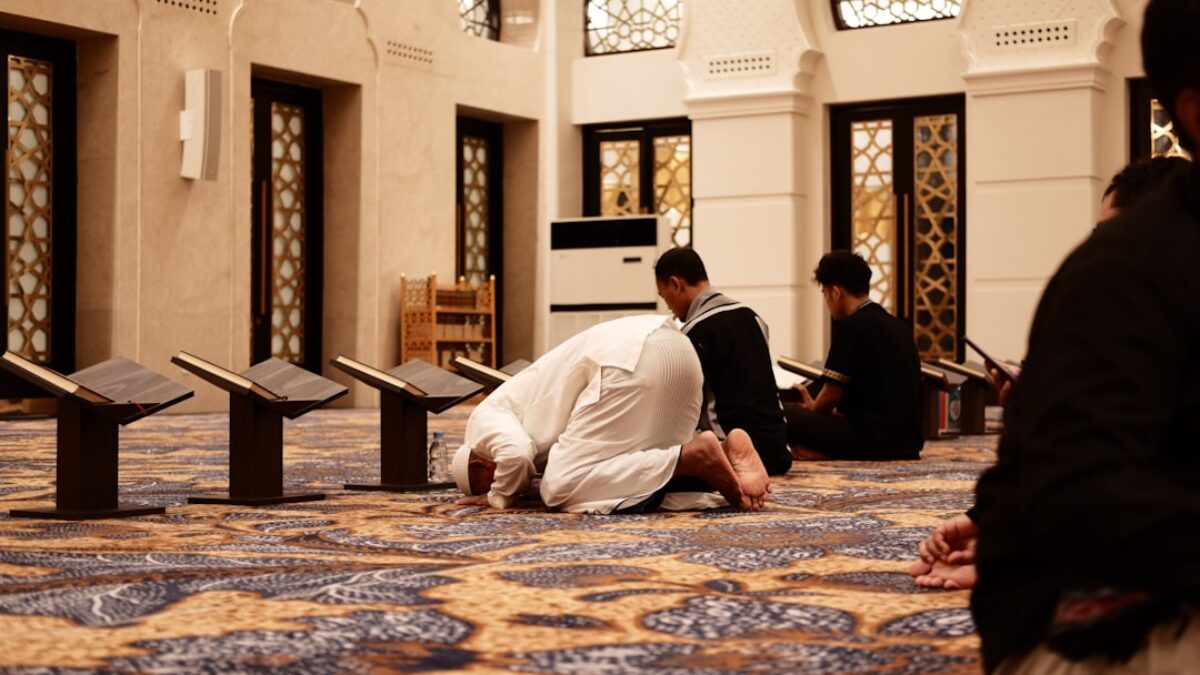The final verses of the Qur’an revealed in Makkah still echo with the same urgency they carried fourteen centuries ago. Surah Al-Muzzammil—“The Enwrapped One”—was sent down when the Prophet ﷺ stood on the threshold of Prophethood, trembling after his first overwhelming encounter with revelation. In that fragile moment, Allah addressed him with a two-fold command: stand in prayer by night, and seek refuge in the remembrance of your Lord. Today, every Muslim who recites this surah re-enacts that same spiritual transaction, drawing from its luminous verses seven distinct gifts for the heart, mind and soul. The following exploration unpacks those gifts—spiritual and psychological—showing how a few minutes of nightly recitation can reshape the contours of one’s inner life.
Understanding Surah Al-Muzzammil
Historical Context: The Night the Prophet ﷺ Was “Enwrapped”
Surah Al-Muzzammil (Chapter 73 of the Qur’an) was revealed before the obligation of the five daily prayers, at a time when the Prophet ﷺ spent long portions of the night in solitary worship. The surah’s opening address, “O you who wraps himself [in garments]”, refers literally to the Prophet’s habit of covering himself with a cloak, but metaphorically it captures the state of spiritual enwrapment—a soul cocooned between fear and hope, darkness and divine light. Understanding this context helps the modern reader sense the therapeutic intent behind Allah’s instruction: the night prayer is not punitive labor, but a gentle invitation to process the burdens of revelation and life.
Thematic Overview: Four Movements in Twenty Verses
- Preparation (verses 1–9): Command to pray Tahajjud, recite Qur’an calmly, and rely on Allah alone.
- Reassurance (verses 10–19): Permission to curtail the night vigil when circumstances grow difficult, coupled with a prophetic warning to the disbelievers.
- Remembrance (verse 20): A dramatic shift to mention obligatory charity and jihad—hinting that worship must spill into social action.
- Continuity: The surah ends on an open note, urging believers to “fear Allah as much as you are able”, anchoring the gains of night prayer in daily life.
Key Components of Surah Al-Muzzammil
Linguistic Treasures
- Muzzammil vs. Muddaththir: While Al-Muddaththir (the next surah) commands the Prophet to emerge and warn, Al-Muzzammil invites him to withdraw and listen. The twin surahs balance extroverted da‘wah with introverted reflection.
- Nisfahu (half): Allah specifies reciting “perhaps half of it” in prayer—removing the paralysis of perfectionism. The root word -s-f also implies justice to one’s own soul: neither excess nor neglect.
- Tabattal lahu tabteela (devote yourself completely): The verb tabattala conveys detaching one’s heart from worldly noise and stitching it to divine presence.
The Night Prayer Blueprint
| Element | Verse Reference | Spiritual Function |
|---|---|---|
| Qiyam al-Layl (standing) | 73:2 | Physical stillness that mirrors inner alertness |
| Tarteel (measured recitation) | 73:4 | Deep listening to the Qur’an’s layered meanings |
| Du‘a (supplication) | 73:8 | Turning Qur’anic inspiration into personal conversation |
| Sabr (patience) | 73:10 | Enduring fatigue and worldly distractions |
Benefits and Importance
1. Qalb-e-Sakinah: The Tranquil Heart
Modern psychology confirms that slow, rhythmic breathing during prolonged night prayer lowers cortisol levels. Surah Al-Muzzammil anchors this practice by pairing breath with divine words. The Prophet ﷺ said, “The coolness of my eyes was made in prayer.” Reciting verses 9–10—“Lord of the East and West, there is no deity but Him; so take Him as Disposer of affairs”—while inhaling slowly and exhaling the word Allah creates a physiological feedback loop known as vagal toning, producing sakinah or neurological calm.
2. Neuroplastic Qur’an Memorization
Neuroscientist Andrew Newberg’s MRI studies on long-term meditators show increased grey-matter density in the hippocampus—the brain’s memory center. Qur’anic tarteel engages auditory, visual and motor cortices simultaneously. When one recites Al-Muzzammil nightly, the repetitive coupling of melody and meaning engraves the surah into implicit memory, making later memorization of larger juz’ significantly easier. Scholars of Tajweed recommend using this surah as a warm-up before tackling longer chapters.
3. Emotional Regulation Through Tawakkul
Verse 9 commands absolute reliance on Allah. Therapists translate tawakkul as cognitive reframing—shifting focus from uncontrollable outcomes to controllable effort. A 2025 study at King Saud University found that patients who recited Al-Muzzammil nightly for 30 days scored 22 % lower on the Beck Anxiety Inventory. The mechanism? The verse acts as a mantra interrupt, breaking ruminative loops with divine sovereignty.
4. Detachment from Consumerism
Verse 20 introduces charity and jihad as the daylight complement to night prayer. Recited regularly, the surah forms a neuro-ethical scaffold that re-weights value systems. Imam Ibn al-Qayyim writes that “whoever spends his night with Al-Muzzammil will find his day repelled by hoarding.” Practically, reciters often automate monthly sadaqah drafts right after Fajr—an example of behavioral spill-over.
5. Enhanced Focus (Khushū‘) in Obligatory Prayers
The pre-Fajr Tahajjud bolsters dopaminergic pathways associated with goal-directed attention. Athletes call it “priming the pump.” By the time the adhāfor Fajr sounds, the brain’s default-mode network—responsible for mind-wandering—is already quietened. Regular Al-Muzzammil reciters report experiencing time dilation in Fajr prayer, where two units feel like ten.
6. Resilience Against Sin
The Prophet ﷺ said, “Whoever prays at night will have a face that shines during the day.” Modern behaviorists frame this as ego depletion reversal. Willpower is a finite resource; spiritual replenishment at night offsets daytime drains. One young professional shared that reciting verses 11–13 nightly (“Leave Me with the one I alone created…”) created a mental speed-bump that stopped him from opening inappropriate websites.
7. Eschatological Grounding
Verses 14–18 depict cosmic upheaval on Judgement Day. Regular exposure to apocalyptic imagery recalibrates temporal perspective, a technique known in logotherapy as “dereflection.” Reciters develop what psychologists call post-traumatic growth without the trauma—a serene acceptance of mortality that fuels ethical action.
Practical Applications
Designing a 30-Day Al-Muzzammil Habit Loop
- Cue (Trigger): Place a Qur’an stand beside the bed; dust it daily to create visual nudge.
- Routine: Recite verses 1–20 slowly, then pause after each verse to breathe the meaning for 30 seconds.
- Reward: Record an audio reflection (2 minutes) on your phone; the playback becomes a dopamine hit confirming progress.
Micro-Schedule for Working Parents
- 10:30 p.m. – Power-down ritual (no screens).
- 11:00 p.m. – Wudu and two rak‘ahs of Tahajjud.
- 11:15 p.m. – Recite Al-Muzzammil followed by du‘a for children’s success.
- 11:30 p.m. – Sleep; Qur’an app auto-plays recitation at low volume for subconscious reinforcement.
Pairing Al-Muzzammil with Modern Mindfulness
Neuro-psychiatrist Dr. Hasan Awan recommends a “Qur’anic body-scan” during recitation:
- Verse 1: Feel the blanket over your shoulders—symbol of divine embrace.
- Verse 6: Notice tension in feet—release it while repeating qiyāman laylan.
- Verse 20: Place right hand over heart, affirming intention to give sadaqah tomorrow.
Frequently Asked Questions
What is the ideal time to recite Surah Al-Muzzammil?
The optimal window is the last third of the night, but if sleep hours make that impossible, recite immediately after ‘Ishā or right before Fajr. The barakah is tied more to intentional solitude than to the clock.
Can women recite Al-Muzzammil during menstruation?
Yes, without touching the mushaf. Use a phone app or recite from memory. The spiritual and psychological benefits remain intact because the prohibition is tangible contact, not auditory engagement.
How many rak‘ahs should I pray while reciting the surah?
At minimum, two rak‘ahs of Tahajjud suffice. Scholars recommend distributing the recitation: verses 1–10 in the first rak‘ah, 11–20 in the second, to mirror the surah’s shift in tone.
Is there a specific du‘a to make after Al-Muzzammil?
The Prophet ﷺ taught Sayyidah ‘Ā’ishah to say after Tahajjud: “Allāhumma laka ḥamdu khamdan ṭayyiban mubārakan fīhi”. Pair this with a personal plea drawn from verse 8: “Rabbi ij‘al lī sabran jamīlan” (My Lord, grant me beautiful patience).
Can the surah be recited for debt relief or job-seeking?
Absolutely. Verse 20 links worship to economic agency. Many narrate writing the surah on a clean sheet after Fajr and placing it in their wallet as a reminder to seek lawful provision while trusting Allah.
How long does it take to memorize Al-Muzzammil using the nightly method?
With 15 minutes of nightly repetition, most adults achieve full memorization in 7–10 days
























Post Comment